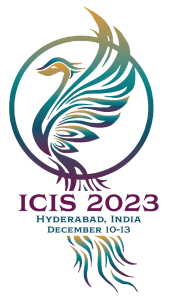Loading...
Paper Number
1349
Paper Type
Completed
Description
The increasing frequency of disasters poses severe challenges to communities. In this study, we propose the concept of digital community resilience, which refers to a dynamic process of using digital technologies to support community recovery from a disaster. Among various disaster stakeholders, the crowd represents a powerful force. The crowd leverages social media platforms to contribute to digital community resilience. However, the resulting crowd actions are not always seamless. Rather, they encounter ongoing boundary coordination issues with other stakeholders. We conducted a case study of China’s response to COVID-19, focusing on the crowd’s efforts and the transforming of boundaries with the government and the public. This study identifies three types of boundaries faced by the crowd – administrative, cognitive, and professional. We propose a process model of digital community resilience showing how different disaster stakeholders use social media to span boundaries after a disaster.
Recommended Citation
Li, Xiao; Kotlarsky, Julia; and Myers, Michael David, "The Role of Social Media and the Crowd in Building Digital Community Resilience: Boundary Spanning during Disasters" (2023). ICIS 2023 Proceedings. 4.
https://aisel.aisnet.org/icis2023/socmedia_digcollab/socmedia_digcollab/4
The Role of Social Media and the Crowd in Building Digital Community Resilience: Boundary Spanning during Disasters
The increasing frequency of disasters poses severe challenges to communities. In this study, we propose the concept of digital community resilience, which refers to a dynamic process of using digital technologies to support community recovery from a disaster. Among various disaster stakeholders, the crowd represents a powerful force. The crowd leverages social media platforms to contribute to digital community resilience. However, the resulting crowd actions are not always seamless. Rather, they encounter ongoing boundary coordination issues with other stakeholders. We conducted a case study of China’s response to COVID-19, focusing on the crowd’s efforts and the transforming of boundaries with the government and the public. This study identifies three types of boundaries faced by the crowd – administrative, cognitive, and professional. We propose a process model of digital community resilience showing how different disaster stakeholders use social media to span boundaries after a disaster.
When commenting on articles, please be friendly, welcoming, respectful and abide by the AIS eLibrary Discussion Thread Code of Conduct posted here.




Comments
15-SocialMedia